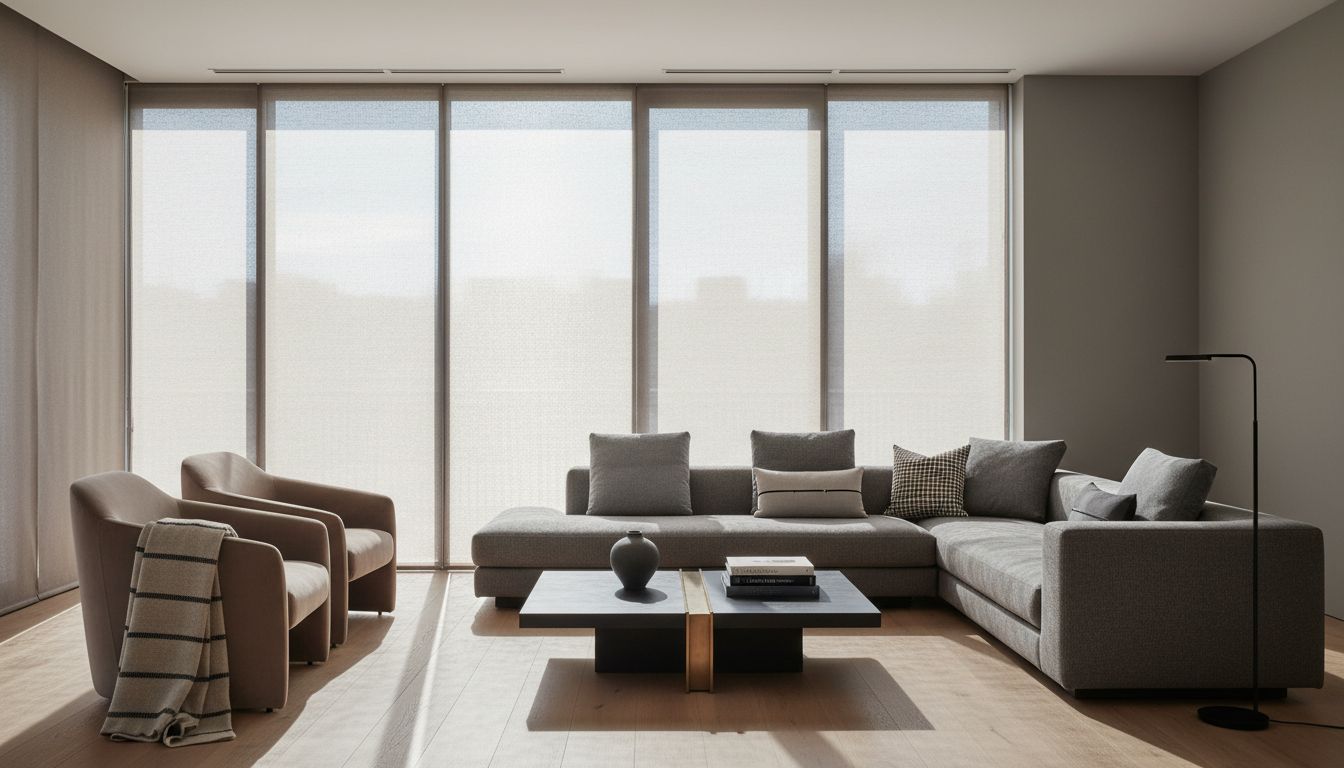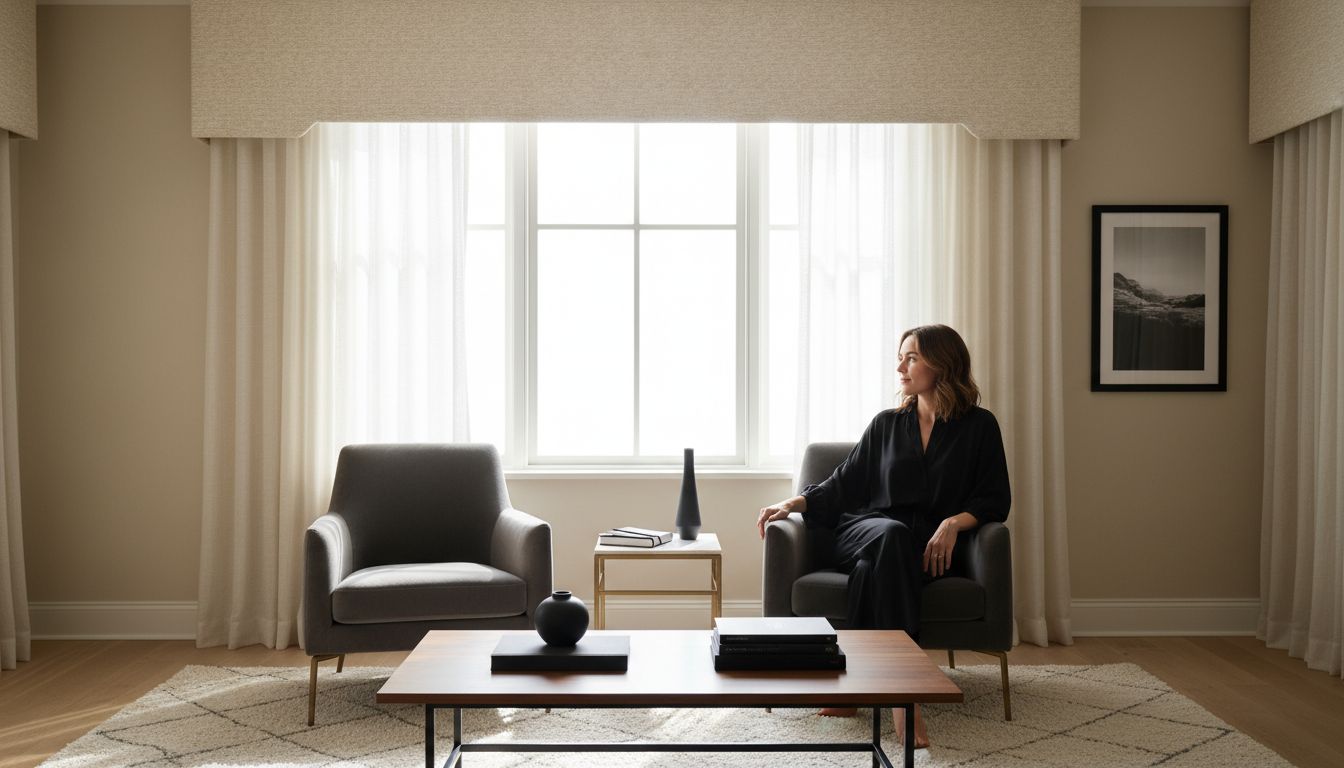
How Light Affects Color: Complete Expert Guide
Every room transforms when the light changes. Up to 80 percent of color perception depends on lighting conditions, influencing how we experience everything from a bold wall color to a cozy sofa. Understanding how different types of light interact with color helps avoid costly design mistakes and ensures your home always looks its best. This guide reveals the surprising ways light shapes what we see and shares practical solutions for true-to-life color in any space.
Table of Contents
- Defining How Light Influences Color
- Types Of Light And Their Effects On Color
- Color Changes In Home Interiors
- Role Of Window Treatments In Color Perception
- Practical Tips For Color-Accurate Design
Key Takeaways
| Point | Details |
|---|---|
| Light influences color perception | Color perception is affected by the interaction of light, object surfaces, and our visual system, highlighting that different wavelengths correspond to different colors. |
| Types of light impact color | Natural light provides the most accurate color rendering, while artificial lights can alter color appearance significantly based on their spectral properties. |
| Window treatments enhance or alter color | Strategic selection of window treatments can optimize natural light flow, transforming color perception and creating varying emotional atmospheres. |
| Ensure color accuracy in design | Use lighting sources with high Color Rendering Index (CRI) and test colors under multiple light conditions for accurate representation in design. |
Defining How Light Influences Color
Color perception is far more complex than most people realize. According to sciencetrek, light enables us to perceive colors by reflecting off objects and entering our eyes, where intricate visual processing transforms wavelengths into recognizable images. When light strikes an object, some wavelengths are absorbed while others are reflected, and those reflected wavelengths determine the color we ultimately see.
The science behind color perception involves fascinating interactions between light, objects, and our visual system. Wavelength plays a crucial role in determining color appearance. Different wavelengths correspond to different colors in the visible spectrum - ranging from short blue wavelengths to longer red wavelengths. When light hits a surface, the object’s molecular structure selectively absorbs or reflects specific wavelengths, creating the rich palette of colors we experience.
Interestingly, our color perception isn’t just a straightforward physical phenomenon. As highlighted by research on the Helmholtz–Kohlrausch effect, color perception involves complex psychological components. This effect demonstrates that color saturation can significantly influence how bright we perceive a color to be, revealing that our visual experience isn’t merely about light reflection but also involves intricate neural processing.
To understand color perception, consider these key factors:
- Wavelength: Determines the fundamental color
- Object surface: Determines which wavelengths are absorbed or reflected
- Light source: Impacts the wavelengths available for reflection
- Human visual system: Processes and interprets incoming light signals
Understanding these interactions helps explain why the same object might look different under various lighting conditions - a blue shirt might appear vibrant under natural daylight but muted under fluorescent office lighting.
Types Of Light And Their Effects On Color
Light sources dramatically transform how we perceive color, with each type casting a unique visual signature. According to Wikipedia, fluorescent lamps emit light through a complex interaction of mercury vapor and phosphorescent coatings, creating a spectral distribution that can significantly alter color perception compared to traditional light sources.
Natural Light represents the gold standard of color rendering, providing the most accurate representation of colors. Sunlight contains a full spectrum of wavelengths, allowing objects to display their true colors with remarkable clarity. In contrast, artificial light sources introduce subtle yet profound variations in color appearance. Incandescent lights typically cast a warm, yellowish tone, while LED lights can range from cool bluish whites to warmer yellow hues.
Some light sources create truly unique color experiences. As noted in research about blacklights, ultraviolet light can cause certain materials to fluoresce, dramatically transforming their apparent color. This phenomenon demonstrates how light isn’t just about illumination, but can fundamentally alter visual perception.
Here’s a quick breakdown of how different light types impact color:
Here’s a comparison of how different types of light sources impact color perception:
![]()
| Light Source | Typical Color Effect | Color Accuracy |
|---|---|---|
| Natural Daylight | True-to-life colors | Excellent |
| Incandescent | Warm, yellowish tones | Good |
| Fluorescent | Cool, green or blue cast | Moderate |
| LED | Variable (cool to warm) | Varies by CRI rating |
| Blacklight | Creates fluorescent colors | Highly variable |
- Natural Daylight: Most accurate color representation
- Incandescent: Warm, yellowish tones
- Fluorescent: Slightly green or blue cast
- LED: Variable color temperatures
- Blacklight: Creates fluorescent effects
Understanding these variations helps explain why a paint color might look entirely different when viewed in a store versus your home, depending on the lighting conditions.
 Learn more about light filtering window treatments to manage how light impacts your interior spaces.
Learn more about light filtering window treatments to manage how light impacts your interior spaces.
Color Changes In Home Interiors
Home interiors are dynamic canvases where light dramatically transforms color perception and emotional atmosphere. According to Wikipedia, fluorescent lighting can significantly impact interior aesthetics, often casting a cooler, greenish hue that makes colors appear dull or washed out, fundamentally altering the room’s intended visual experience.
Natural Light plays the most critical role in color transformation. As sunlight shifts throughout the day, wall colors, furniture, and decor can appear dramatically different - a warm beige might look soft and neutral in morning light, but transform to a more golden tone by late afternoon. Artificial lighting introduces even more complexity, with different bulb temperatures creating subtle yet profound shifts in color perception.
Some lighting sources create truly unique color experiences. Wikipedia’s research on blacklights reveals how ultraviolet light can cause certain materials to fluoresce, creating unexpected visual effects that can dramatically alter a room’s appearance. This phenomenon demonstrates how lighting isn’t just about illumination, but about creating entire sensory experiences within interior spaces.
To manage color changes effectively, consider these strategic approaches:
- Position furniture to maximize natural light exposure
- Use adjustable lighting with variable color temperatures
- Select paint colors that perform well under different light conditions
- Invest in window treatments that help control light quality
Understanding these nuanced interactions helps you create more dynamic, adaptable interior environments. Explore our guide to choosing a color palette for custom window treatments to master the art of managing light and color in your home.
Role Of Window Treatments In Color Perception
Window treatments are powerful tools that dramatically shape how we perceive color within interior spaces. According to ScienceTrek, these design elements can significantly influence the amount and quality of natural light entering a room, thereby transforming color perception and overall visual experience.
Light Filtering window treatments represent a sophisticated approach to managing color dynamics. Different materials and opacity levels can soften, diffuse, or dramatically alter incoming light, creating nuanced color transformations. Sheer fabrics might cast a gentle, ethereal glow, while heavier materials can create deep, rich color saturations that change dramatically throughout the day. As noted by Wikipedia, the interaction between window treatments and artificial lighting can further modify color perception, introducing complex spectral variations.
The strategic selection of window treatments becomes an art form in color management. Translucent materials like cellular shades can create a soft, diffused light that gently enhances room colors, while blackout treatments can provide complete light control - perfect for spaces where precise color consistency is crucial. This manipulation of light isn’t just aesthetic; it’s a functional approach to creating desired emotional and visual environments.
Consider these key strategies for using window treatments to optimize color perception:
- Choose lighter fabrics to maximize natural light penetration
- Select adjustable treatments that allow gradual light transitions
- Match treatment opacity to room’s color palette and lighting goals
- Consider seasonal light changes when selecting window coverings
Learn more about understanding window treatments for privacy to discover how these design elements can transform your living spaces.
Practical Tips For Color-Accurate Design
Achieving precise color representation requires more than just selecting attractive paint or fabrics. According to Wikipedia, one critical strategy is choosing light sources with a high Color Rendering Index (CRI), which ensures more accurate color representation by emitting a spectrum closer to natural daylight.
Lighting placement and quality are fundamental to color accuracy. Natural daylight remains the gold standard, but when that’s not possible, designers must strategically layer artificial lighting. Different bulb temperatures can dramatically alter color perception - warm lights tend to make colors appear more golden, while cool lights can introduce bluish or greenish tones. Professional designers often use multiple light sources at varying heights and temperatures to create a balanced, true-to-color environment.
Specialized lighting techniques can also enhance color perception. Wikipedia’s research on blacklights reveals how unique light sources can highlight specific color characteristics, creating targeted visual experiences. For instance, UV-sensitive materials can be strategically illuminated to create dramatic color transformations or draw attention to specific design elements.
To ensure color-accurate design, consider these practical tips:
- Use daylight-balanced LED bulbs with high CRI ratings
- Test paint and fabric colors under multiple lighting conditions
- Layer lighting sources to create balanced illumination
- Use color-matching apps and professional color measurement tools
- Consider the time of day when evaluating colors
Learn how to measure windows for perfect custom treatments to ensure your design vision translates perfectly into reality.
Enhance Your Home’s True Colors with Expert Window Treatments
Lighting has the power to transform how your home’s colors come to life. This expert guide reveals how changing light sources, natural daylight shifts, and artificial lighting affect color perception. If you have ever felt frustrated by paint colors or decor that look different at home than in the store, you understand this challenge well. Managing light effectively is key to preserving the colors you love and creating the perfect atmosphere.

Discover how customizable window treatments from Value Blinds can help solve these color challenges. With options like light filtering cellular shades, blackout roller shades, and adjustable blinds, you can control the quality and amount of light entering your home. Our energy-efficient, stylish, and easy-to-install designs give you the power to enhance or soften natural light, ensuring your interior colors stay vibrant all day long. Start mastering your home’s lighting and color harmony today by exploring our full catalog of custom window treatments. For precise results, check out our guide on measuring windows to achieve a perfect fit. Looking for more ways to balance light naturally? Learn about light filtering window treatments designed to create your ideal color environment.
Take control of your home’s color experience now and bring your interior design vision vividly to life.
Frequently Asked Questions
How does light influence color perception?
Light affects color perception by reflecting off objects and entering our eyes, where wavelengths are processed to determine the colors we see. Different wavelengths are absorbed or reflected by objects, influencing our visual experience.
What types of light sources affect color accuracy?
Different light sources can significantly alter color perception. Natural daylight is the most accurate, while incandescent lights can give a warm tone and fluorescent lights often cast a cooler hue. LED lights vary based on their color temperature.
How can I optimize light for accurate color representation in my home?
To ensure accurate color representation, use daylight-balanced LED bulbs with a high Color Rendering Index (CRI), test colors under multiple lighting conditions, and layer different light sources to achieve balanced illumination.
What role do window treatments play in color perception?
Window treatments can influence the quality and amount of light entering a room, thus affecting how colors are perceived. Using sheer or light-diffusing materials can enhance room colors, while blackout treatments help maintain color consistency.







